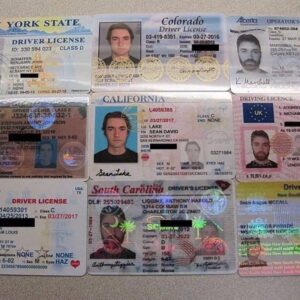Texas drivers license is a key milestone. With a booming population, expansive highways, and a culture that values independence, having a driver’s license in Texas is more than a privilege—it’s almost a necessity. In this complete guide, we’ll walk through everything you need to know about the Texas driver’s license process: who needs it, how to get it, the requirements, costs, tests involved, and what to expect after you receive it. Whether you’re applying for the first time or transferring a license from another state, this article has you covered.
Who Needs a Texas Driver’s License?
In Texas, anyone who wants to operate a motor vehicle on public roads must obtain a valid Texas driver’s license unless they are exempt (for example, certain military personnel). If you’ve recently moved to Texas from another state, you’re required to transfer your out-of-state license within 90 days of becoming a resident. For new drivers under 18, the process involves completing driver education and following the graduated license program.

Types of Texas Driver’s Licenses
The Texas Department of Public Safety (DPS) issues several types of licenses:
-
Class C License: The most common, allowing you to drive regular passenger vehicles.
-
Class A and B Licenses: For commercial drivers (CDLs).
-
Learner License (Instruction Permit): For individuals at least 15 years old learning to drive.
-
Provisional License: For drivers under 18 who have completed driver education.
There are also licenses for motorcycles, commercial vehicles, and specialized endorsements.
Step-by-Step: How to Get a Texas Driver’s License
Here’s a straightforward breakdown of the process:
1. Determine Your Eligibility
To apply for a Texas driver’s license, you must be at least 16 years old and have completed the necessary driver education requirements if you’re under 25. All applicants must provide proof of lawful presence in the U.S., Texas residency, identity, and Social Security number.
2. Complete Driver Education (If Required)
If you’re under 25, Texas law requires you to complete a state-approved driver education course. These are often offered through high schools, driving schools, or online programs.
-
Ages 15–17: Must complete both classroom and behind-the-wheel instruction.
-
Ages 18–24: Must complete a 6-hour adult driver education course.
3. Gather Required Documents
You’ll need to bring several documents to the DPS office, including:
-
Proof of identity (e.g., passport, birth certificate)
-
Proof of Social Security number
-
Two documents proving Texas residency (e.g., utility bills, lease agreements)
-
Proof of U.S. citizenship or lawful presence
-
Proof of Texas vehicle registration and insurance (if applicable)
Use the DPS Document Checklist to ensure you have everything needed.
4. Schedule and Visit a DPS Office
Make an appointment at your local DPS office to minimize wait times. During your visit, you’ll:
-
Submit your documents
-
Have your photo taken
-
Provide fingerprints
-
Pass a vision test
-
Pay the license fee (usually around $33 for a standard Class C license)
5. Take the Required Exams
Depending on your age and experience, you may need to pass:
-
Knowledge Test: Covers Texas traffic laws, road signs, and safe driving practices.
-
Driving Skills Test: A behind-the-wheel exam to assess your ability to safely operate a vehicle.
You can study for the knowledge test using the Texas Driver Handbook, available online or in print.
Transferring an Out-of-State License to Texas
If you already have a valid license from another U.S. state, transferring to a Texas driver’s license is relatively simple. You’ll need to visit the DPS office with your current license and required documents. In most cases, you won’t have to take the written or driving tests again unless your license has expired.
For new residents, it’s essential to update your vehicle registration and insurance to reflect Texas requirements before applying.
Fees and Renewal Process
Here’s a quick look at common fees related to a Texas driver’s license:
-
First-time license (under 18): $16
-
Standard Class C license (18+): $33
-
License renewal: $33 every six years
-
Replacement license (lost/stolen): $11
Most Texas driver’s licenses are valid for six years and can be renewed online, by mail, or in person. It’s a good idea to keep your address updated with DPS to avoid missing renewal notices.
Real ID Compliance in Texas
Texas is Real ID compliant, which means your Texas driver’s license can be used for federal identification purposes, like boarding domestic flights or entering federal buildings. You can identify a Real ID by the gold star in the upper-right corner of your license. If your license doesn’t have this star, you’ll need to provide additional documentation to upgrade.
What Happens After You Get Your License?
Once you’ve received your Texas driver’s license, it’s important to follow all traffic laws and maintain valid vehicle registration and insurance. If you’re under 18, there are additional restrictions, such as:
-
No driving between midnight and 5 a.m. (unless for work or school)
-
No using wireless communication devices, including hands-free
-
Passenger restrictions during the first 12 months
Violating these can lead to penalties or license suspension.

Texas Driver Responsibility Program (DRP)
Although the DRP was officially repealed in 2019, it’s worth noting that Texas once imposed annual surcharges for certain traffic offenses. Today, those surcharges no longer exist, making it easier for drivers to regain or maintain their licenses without extra financial burdens. However, offenses like DUI, DWI, or excessive traffic violations still carry serious penalties.
Tips for a Smooth Experience
-
Use the DPS Online Services: Many forms and services are available online, including appointment scheduling, document checklists, and renewal.
-
Avoid Peak Hours: Visit early in the morning or midweek to minimize wait times.
-
Double-Check Your Documents: Missing paperwork can delay the process or force you to reschedule.
-
Practice the Driving Test: Know the route, common maneuvers, and the scoring system used by examiners.
Conclusion
Getting your Texas driver’s license is a big step toward independence and convenience, whether you’re new to the state or a first-time driver. With the right preparation, documentation, and understanding of the process, you can navigate the DPS system smoothly and legally hit the roads of Texas.
Remember, driving is a privilege that comes with responsibilities. Follow the rules, stay insured, and keep your license up to date—and you’ll enjoy everything Texas has to offer from behind the wheel.
